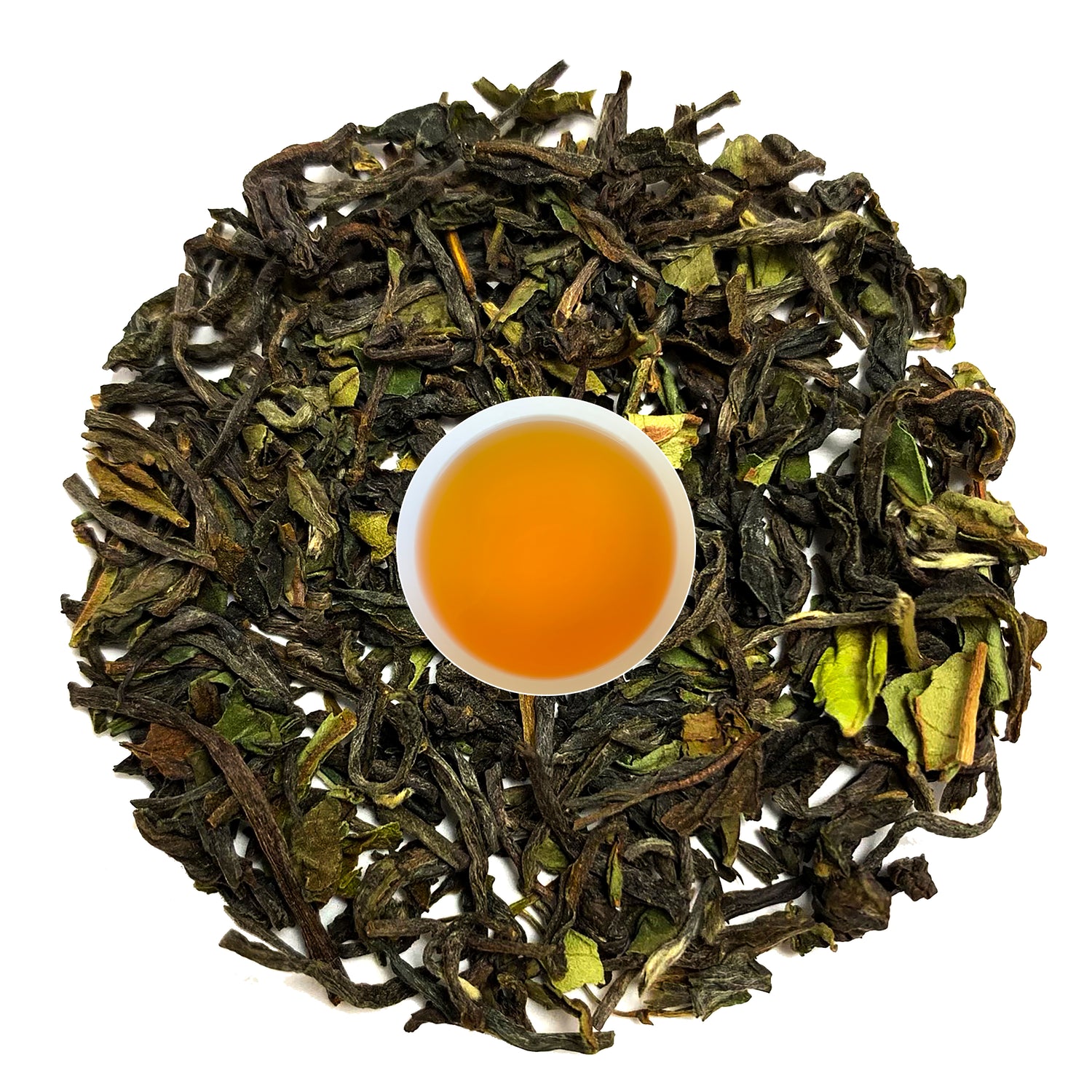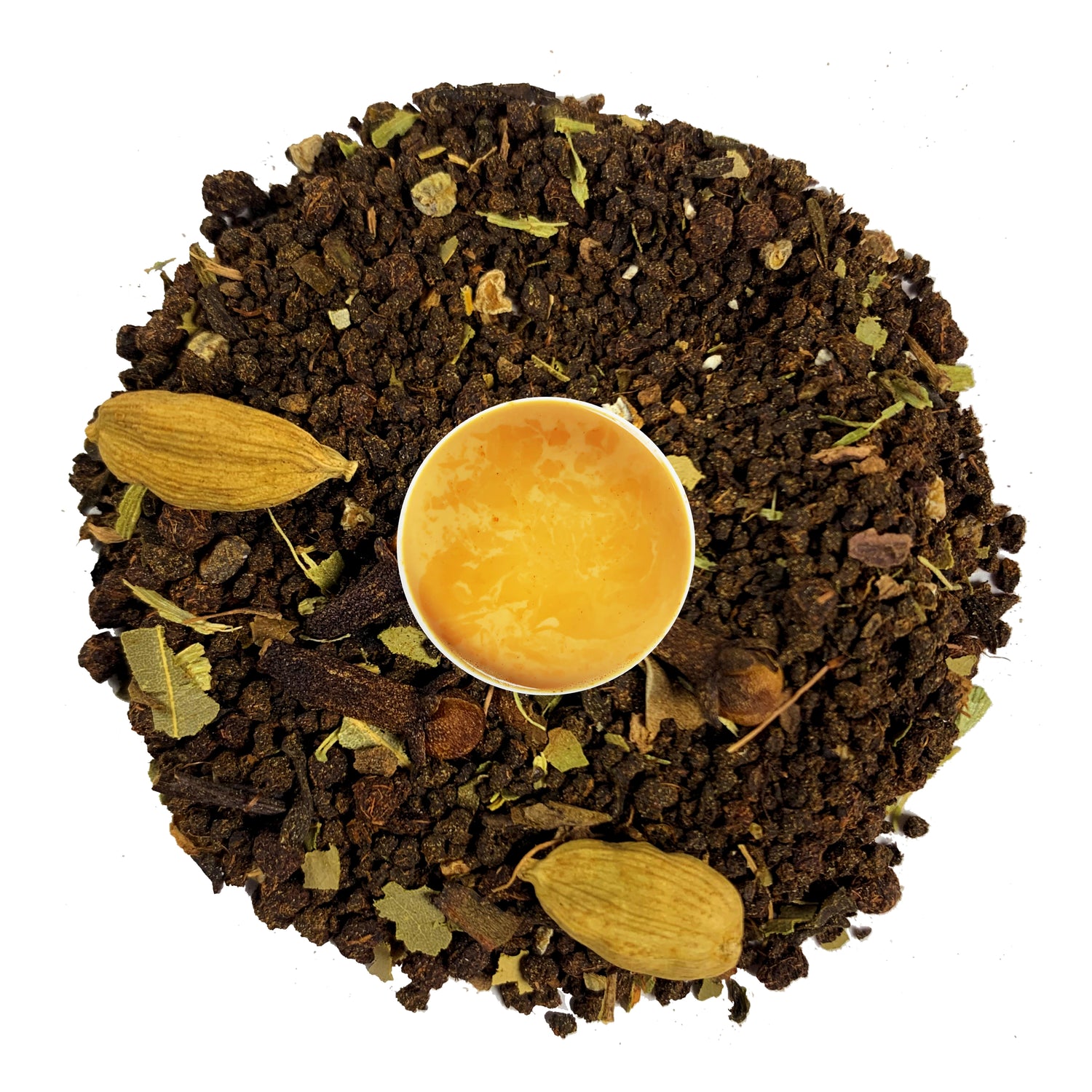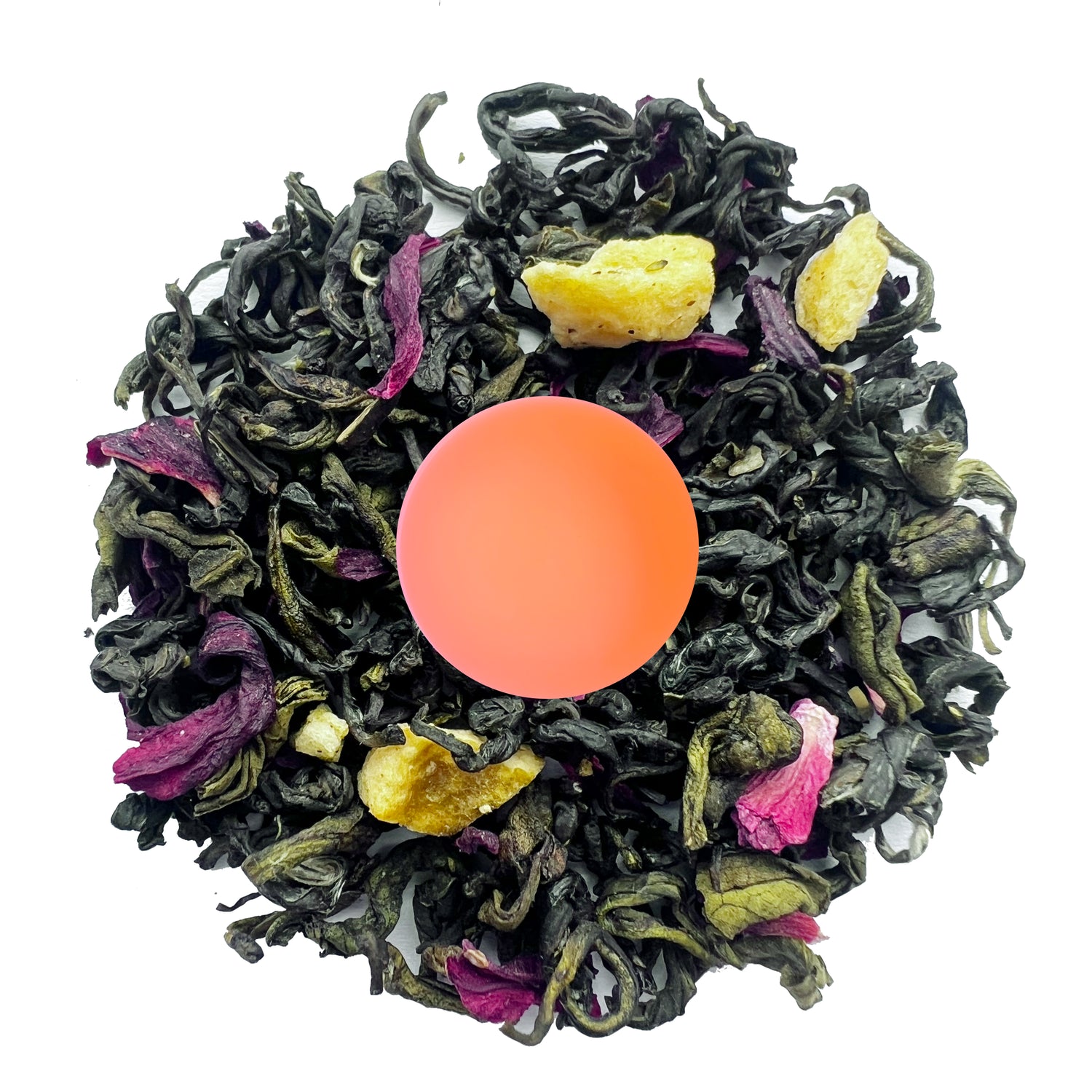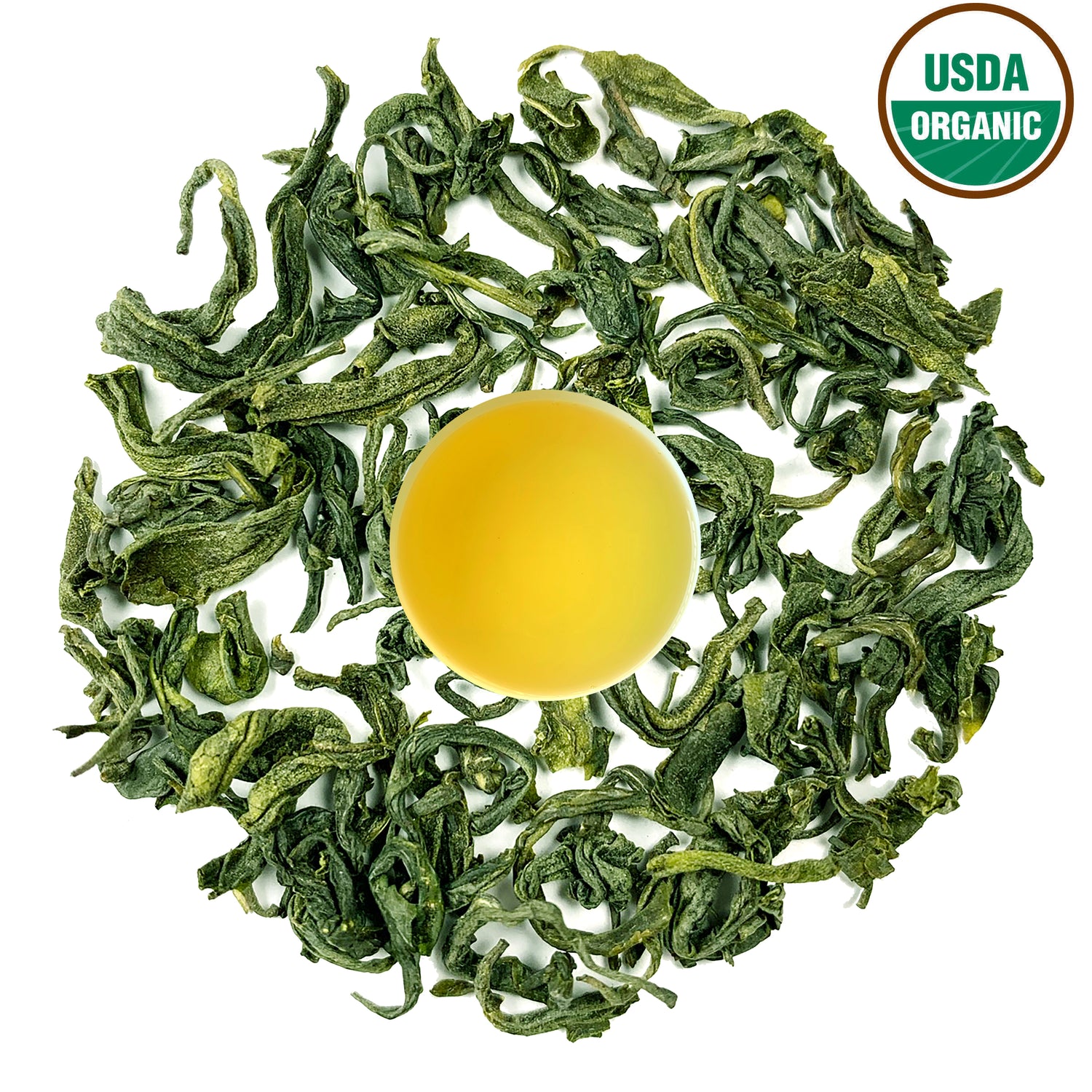
Camellia sinensis: The Tea Plant Behind All True Green Teas
What Is Camellia sinensis?
- Camellia sinensis is the plant species whose leaves and buds produce what we know as “true tea” — green tea, black tea, oolong, white, etc. It’s not an herbal or fruit infusion.
- Two major botanical varieties are var. sinensis (smaller leaves, native to China, cooler climates, often used for delicate teas) and var. assamica (bigger leaves, used in robust black teas and teas grown in warmer, humid regions)
Varieties & Cultivars
- Var. sinensis: used often in East Asia, higher-altitude plantations, produces delicate, grassy, floral green teas.
- Var. assamica: larger leaves, used heavily for bold black teas (like Assam), but also for greens and oolongs in certain regions.
- Other less common varieties or subspecies include dehungensis, pubilimba, among others greentea.net
- Cultivar + terroir: Elevation, soil, rainfall, and even harvesting time affect the chemical composition (catechins, polyphenols, aromas) and thus flavor and health effects.
Buy Our Loose Leaf Teas: |
Health & Biological Benefits Backed by Research
Camellia sinensis (especially green tea) has been studied extensively. Here are key findings:
- Polyphenols and Catechins: Green tea is rich in catechins, especially EGCG (epigallocatechin-3-gallate), which acts as an antioxidant, helps fight free radicals, protects cells. Healthline
- Immune Modulation: Regular intake enhances immune responses; it affects T-cells and other immune markers, potentially reducing chronic disease risk. CCSE
- Antimicrobial / Antiviral Properties: Extracts from C. sinensis inhibit growth of various bacteria and may reduce risk of infections. MDPI
- Anti-Inflammatory / Anti-Aging / Neuroprotection: Green tea can reduce inflammation, slow photo-aging (wrinkles, skin damage), protect brain cells (Alzheimer’s, etc.), and support stress resistance via mechanisms like autophagy
- Metabolic & Cardiovascular Benefits: Helps with weight management, reduces risk of cardiovascular diseases, improves lipid profiles. JDDT
- Gut Health: Camellia sinensis compounds support gut barrier integrity, promote good bacteria like Lactobacillus & Bifidobacterium, reduce harmful bacteria. ScienceDirect
Flavor & Processing: Why Not All Green Teas Taste the Same
- Oxidation level: Green tea is minimally oxidized. If oxidation is higher (or leaves are allowed to ferment), flavors become darker, more tannic, less green.
- Heat processing: Whether tea is steamed (Japanese style) or pan-fired (Chinese style) changes flavor—steamed tends to be vegetal, fresh; pan-fired tends to be more toasted/nutty.
- Leaf selection & age: Young buds = more delicate, sweeter. Older leaves = stronger, more astringent.
- Terroir: Mountain altitude (like Himalayas, high altitude) often gives slower growth, richer flavor compounds, more intense aroma.
Dosage, Safety, and What to Watch Out For
- While health benefits are strong, moderation matters. Excessive consumption of EGCG or very high doses of green tea extract can lead to issues (e.g. liver stress) in rare cases. MDPI
- Caffeine sensitivity: Even green tea has caffeine. Those sensitive or consuming other sources should manage intake.
- Interaction with medications: As with many botanical substances, interactions are possible. When in doubt, check with healthcare provider.
- Quality: Pesticide residues, poor storage degrade health benefits. Choosing high-quality tea (like Danfe Tea’s Himalayan green tea) ensures purity.
How Danfe Tea Sources & Uses Camellia sinensis for Green Teas
(Adapt this based on actual Danfe/your supply chain if applicable)
- Danfe Tea sources Himalayan green tea from high-altitude gardens — where Camellia sinensis var. sinensis thrives.
- Leaves are minimally processed, often pan-fired or gently dried to preserve catechins and L-theanine.
- Danfe’s green tea offers fresh vegetal or floral notes, mild astringency, excellent antioxidant content.
- Using Danfe Tea’s green tea in your daily routine supports immune health, alertness, and stress reduction — combining both flavor and function.
How to Brew Green Tea Properly
To get the full benefit of Camellia sinensis:
- Use good quality leaves (fresh, well-stored).
- Water temperature: ~ 75-80°C (not boiling), especially for delicate green tea.
- Steep time: 2-3 minutes for green tea; longer steeping increases bitterness.
- Use right amount: About 2 grams per 150 ml (≈1 teaspoon of loose leaf).
- Use filtered water. Avoid metallic containers.
If you want premium green tea that delivers both flavor and health, try Danfe Tea’s Himalayan Green Tea (from Camellia sinensis). Taste the difference that high altitude, careful processing, and fresh leaves make.
🛒 Order now from Danfe Tea — experience the authentic benefits of Camellia sinensis in your cup today.
Related Blogs:
|
What to Put in Tea: Delicious Add-Ins to Make Your Cup Irreshed and Flavorful Types of Green Tea: A Complete Guide to Varieties, Benefits, and Brewing |
FAQs
Q: What is Camellia sinensis and why is it important?
A: It’s the tea plant species whose leaves are used to make all “true teas” (green, black, white, oolong). Its chemical profile (polyphenols, catechins, L-theanine) gives green tea much of its health power.
Q: Is var. sinensis or var. assamica better for green tea?
A: Both can make green teas. Var. sinensis often produces finer, lighter, more delicate green teas. Var. assamica tends to have larger leaves and stronger flavor. The “better” one depends on flavor preference and processing.
Q: How many cups of green tea should one drink to get benefits?
A: Many studies suggest 2-3 cups per day to get meaningful health effects (antioxidant, metabolic, etc.). Overconsumption of extracts, however, should be approached with caution.
Q: Does green tea from higher altitude taste different?
A: Yes — high altitude (colder, mist, slower growth) often leads to richer flavor compounds, more aroma, slower bitterness development, and better antioxidant profiles.
Q: Can Camellia sinensis teas help with stress and photoaging?
A: Yes. Research shows green tea polyphenols reduce oxidative stress in skin (photoaging), increase stress resistance, support neuroprotection and improved cellular function. PubMed










